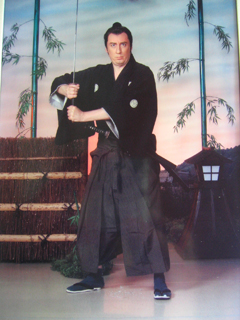A little over a year ago I saw a remarkable exhibition of samurai swords at the British Museum. Sharp enough to cut a man in two, yet evidently crafted with a profound and poetic sense of beauty, each one seemed like a paradox made tangible - an emblem of perfect ruthlessness allied to the most finely tuned aesthetic sensibility.
I was impressed in particular by something that Japanese swordsmiths called the hamon, a wavy line resembling mist, or smoke, created where two forms of steel - the hard, cutting edge of the sword and its more flexible back -meet on the blade itself. This visual accident of the process by which such swords were made, a complex folding and tempering of steel, was the secret of the samurai sword's success, enabling it to cut right through a man's skull as if it were a melon. Apparently, Japanese archaeologists can date ancient battlefields according to the condition of the fallen warriors' skulls - if the blade has penetrated down to the jawbone, the sword used to deal the death blow was forged during the heyday of the samurai as a warrior class.
 For the samurai, the hamon was not only the mark of their swords' unparalleled deadliness, it was also what raised the blade to the level of a work of art. Names such as 'billowing waves', 'cherry blossom' or 'chrysanthemum on the river' were given to the crystalline shapes that seem to lurk within the hamon. Like the haiku, that epigrammatic verse form, the sword was held to contain within itself, like a flash of insight, a sudden glimpse into the beauties of nature.
For the samurai, the hamon was not only the mark of their swords' unparalleled deadliness, it was also what raised the blade to the level of a work of art. Names such as 'billowing waves', 'cherry blossom' or 'chrysanthemum on the river' were given to the crystalline shapes that seem to lurk within the hamon. Like the haiku, that epigrammatic verse form, the sword was held to contain within itself, like a flash of insight, a sudden glimpse into the beauties of nature.I found it hard to forget those swords, and some months after seeing the British Museum's exhibition - which was at once the brainchild and...


